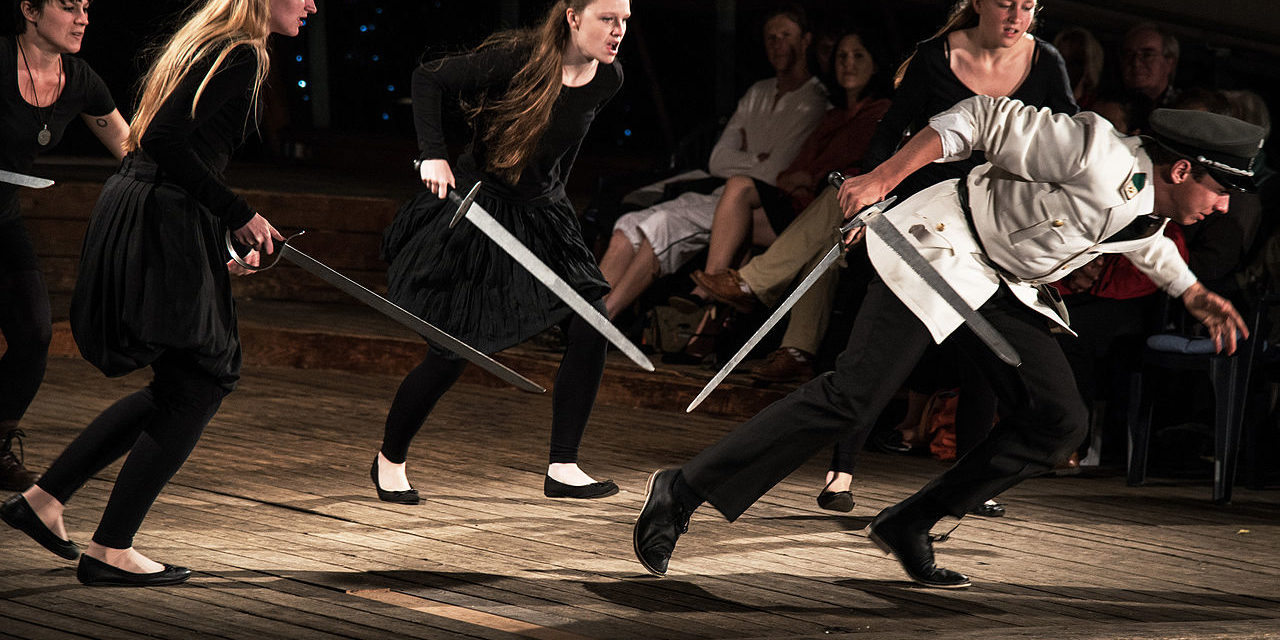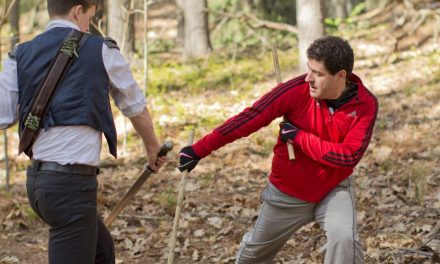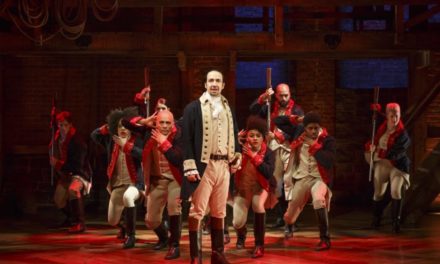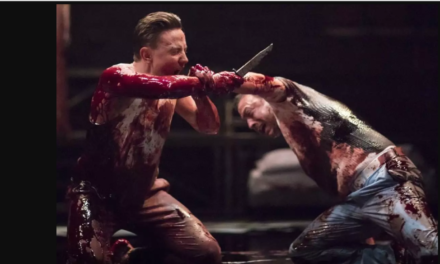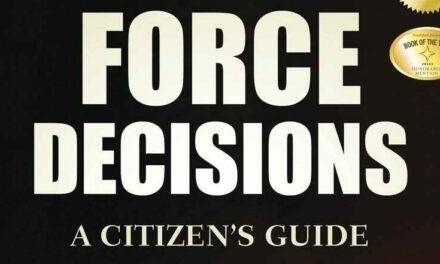What early career fight directors should be reading?
This post addresses what I feel should be the seed texts in an early career fight director’s library and why. I maintain several pages of resources for those interested in stage combat on my personal website, but I have not written anything prescriptive prior to this outside of course syllabi.
These readings assume that the person in question is receiving and pursuing proper hands-on training in the physical techniques of stage combat, training and mentorship in fight direction, as well as having had a general theatre education, first aid/cpr training, and other prerequisites.
General Theatre Knowledge
The first thing I told my workshop students to do was to go back and find the syllabi for any Theatre History courses that they took in college and read everything that they blew off, and then reread everything that didn’t sink in the first time.
I’ve written elsewhere on the importance of studying theatre history, and in the case of fight directors, one of the things I told them was that they are Theatre Practitioners first, and Fight Directors second. Being theatre practitioners, they should be conversant in the foundational texts and theories of the field. Meyerhold and Edward Gordon Craig are incredibly useful points of reference for anyone involved in physical storytelling, and Aristotle is important for anyone involved in any storytelling, period. Our Town, Death of a Salesman, and A Raisin in the Sun, while not especially heavy on the fight scenes, are essential texts and wonderful case studies in plot structure and so on.
That said, let’s get specific about stage combat:
Technical Stage Combat Texts
These are books that should be on the shelves of anyone seriously intending to compose violence for the stage. They are for the most part technical manuals on theatrical violence, and would serve as both a foundation and as points of reference.
Fight Directing for the Theatre (Suddeth) – this book is a comprehensive overview of the field and very little else out there compares to it.
Either Actors On Guard: A Practical Guide for the Use of Rapier & Dagger on Stage and Screen (Girard) or Swashbuckling: A Step-By-Step Guide to the Art of Stage Combat & Theatrical Swordplay (Lane) – because you need something that can serve as a reference for weaponry. (Eventually one would get both of these texts and then more.)
Combat Mime (Martinez) – for the overview of unarmed techniques, also as a reference book.
The Theatrical Firearms Handbook (Inouye) –because you will come across many gun scenes. Someone needed to write this book and it is a good thing for all of us that Kevin Inouye took it upon himself to do so.
BH Barry’s Fights for Shakespeare Book I: Romeo & Juliet –or the fightaturgy. This one is a quick read and as a case
study
it’s extraordinarily useful.
It should go without saying that one should be reading The Fight Master: The Journal of the Society of American Fight Directors (or its equivalent in your country).
Essential Background Information about Violence, Dueling Traditions, and Martial Arts (Or, “you need to know these things when you’re a fight director”)
These books and DVDs are background information on various topics that are essential knowledge in the field. None of these are about theatre. All are important resources for fightaturgy and will inform the work of a fight director.
The Art and History of Personal Combat (Wise) – because it is one of the best resources out there for the history of swordsmanship in Europe, and because that history is incredibly important to the context of our work. This particular text is of special importance in interpreting Shakespeare, as references to dueling are strewn throughout his work.
At least one book that is a survey of martial arts of the world. One of the better ones is The Fighting Arts: Great Masters of the Martial Arts (Reid & Croucher), but this type of book is almost its own genre. The different fighting systems are useful frames of reference in many contexts. A fight director should be able to converse on the differences between Aikido, Wing Chun, and Tae Kwon Do. (It also would not hurt to study a bit of martial arts, but that’s another discussion.) Again, this falls under the “a good start” category and there is much to learn by digging deeper. I am forgoing the temptation to list my favorite texts about specific arts, as this is a post about foundational knowledge.
I would also suggest watching some footage of UFC matches as the sport of MMA (Mixed Martial Arts) is currently very influential in how we as a culture see violence.
Something by Rory Miller and/or Marc MacYoung on violence dynamics – both of these men have several books and DVDs out and I would consider them thought leaders in the field of self-defense and the study of violence. They have some of the best work out there on the subject, and they present it in very common sense terms. They are an antidote to many of the fantasies about violence out there. I am a particular fan of Miller’s Meditations on Violence: A Comparison of Martial Arts Training and Real World Violence, and much can be learned from his Logic of Violence DVD as well. I also strongly recommend MacYoung’s In The Name of Self Defense: What It Costs, When It’s Worth It. Both of these authors are very prolific, either or both have excellent options for fight directors to be better versed in the context of actual violence.
Other Material
First aid manuals (and actual training). – This should be obvious.
It is useful to keep abreast of various blogs and periodicals about theatre in general. Some articles and posts specifically about fight directing get passed around semi-regularly and are good to read. I suggest people read “Get it together and hire a fight director” on the Bitter Gertrude blog, as well as my recent HowlRound articles.
Chop Socky: Cinema Hong Kong – an IFC documentary that is a great intro to the genre of martial arts movies. Films of Fury: The Kung Fu Movie Movie is also pretty good, though I had some accuracy issues with it. You do not need to be an expert on Kung Fu movies to create stage violence, but some familiarity with the genre is important.
Along similar lines, if you have not sat down and watched a WWE – World Wrestling Entertainment show, that’s worth your time as well. Again, no need to be an expert, but you should know how that flavor of performed violence looks.
I’ll stress again the importance of reading and seeing as many plays as possible, and to keep an eye out for violence in the scripts. This is both for fightaturgy and for employability. For example, a high school or college doing Rent may forget that there is a fight in it until late in the game. I’ve often had this conversation: “Who is doing your fights?” “There aren’t any fights in X.” “Oh? Are you cutting the Y scene then?” “Oh yeah… would we be able to get you to come in?”
I am working on the assumption that people are trying to constantly grow, learn, and improve in their art. There are tremendous resources available through the SAFD and the regional workshops (and their equivalents in other countries), and I cannot overstate the importance of community. That said, there is much that can be learned via books and documentaries that will be endlessly useful in one’s career as a fight director.
I am happy to take suggestions for further reading in the comments, and remember again that I maintain pages of resources for those interested in the field.
Adapted from a post on MeronLangsner.com
This post was written by the author in their personal capacity.The opinions expressed in this article are the author’s own and do not reflect the view of The Theatre Times, their staff or collaborators.
This post was written by Meron Langsner.
The views expressed here belong to the author and do not necessarily reflect our views and opinions.

